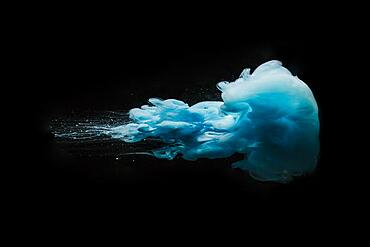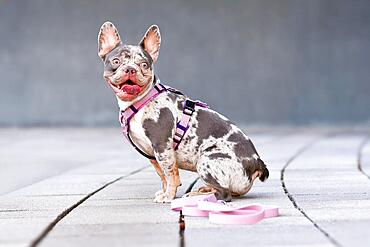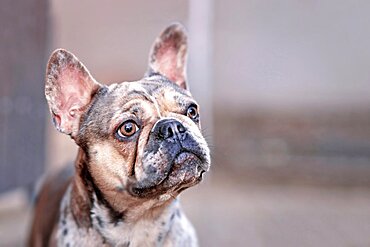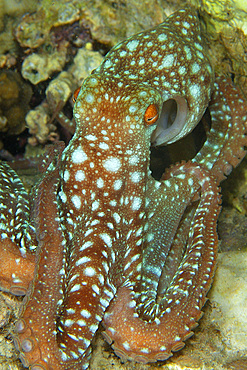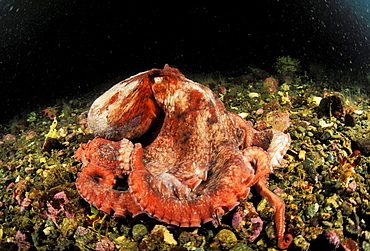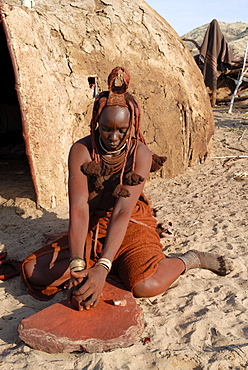Recent searches
Loading...
832-403619 - Close up african girl covering her face
860-291565 - Eastern grey squirrel (Sciurus carolinensis) perched on a branch and watching. A case of melanism. This squirrel is a grey squirrel with a defective pigment gene given by the fox squirrel (Sciurus niger), which makes the colour of its fur darker. Mauricie region. Quebec. Canada
832-398949 - Merle tan French Bulldog dog wearing pink dog harness in front of gray wall
832-398547 - Side view of merle tan French Bulldog dog with long nose wearing pink dog harness
832-398127 - Portrait of merle colored French Bulldog dog with mottled patches
832-397698 - India symbol. Colored colorful powder kumkum in bowls on Indian bazaar for Holi and other festivals celebration
860-290729 - A rare black serval, Leptailurus serval, standing in the grass in Lualenyi game reserve. The genes of melanistic animals carry a mutation that creates more dark pigment than light pigment.
1350-2534 - Starry night octopus, Octopus luteus, foraging on coral reef at night, Malapascua, Cebu, Philippines, Visayan Sea.
1116-44921 - Autumn Coloured Trees Against A Blue Sky, United States Of America
832-381262 - Blue front door, next to color pigments, house facade, blue painted house, medina of Chefchaouen, Chaouen, Tanger-Tétouan, Kingdom of Morocco
832-382141 - Sales stand with many bright colors, medina of Chefchaouen, Chaouen, Tanger-Tétouan, Morocco, Africa
1218-508 - Boy being thrown in the air during the Holi Pigment Throwing festival in Durbar Square, Kathmandu, Nepal, Asia
1218-502 - Crowd throwing pigment at the Holi Festival, Durbar Square, Kathmandu, Nepal, Asia
1218-504 - Crowd throwing pigment at the Holi Festival, Durbar Square, Kathmandu, Nepal, Asia
1218-319 - Men throwing colored pigment, Holi Festival, Vrindavan, Uttar Pradesh, India, Asia
1218-320 - Men throwing colored pigment, Holi Festival, Vrindavan, Uttar Pradesh, India, Asia
1218-336 - Tourists covered in pigment during the Holi Festival, Vrindavan, India, Asia
1218-316 - Man covered in red pigment, Holi Festival, Vrindavan, Uttar Pradesh, India, Asia
1218-313 - Holy cow, pigment throwing Holi Festival, Vrindavan, Uttar Pradesh, India, Asia
1218-324 - Female tourists stand in front of Temple during the pigment throwing Holi Festival, Vrindavan, Uttar Pradesh, India, Asia
1218-314 - Men covered in pigment, Pigment throwing Holi Festival, Vrindavan, Uttar Pradesh, India, Asia
1218-321 - Man's bare feet during the color pigment throwing festival, Holi Festival, Vrindavan, Uttar Pradesh, India, Asia
1218-315 - Men throwing yellow pigment, Holi Festival, Vrindavan, Uttar Pradesh, India, Asia
1218-322 - Men throwing colored pigment, Holi Festival, Vrindavan, Uttar Pradesh, India, Asia
1218-318 - Man throwing colored pigment, Holi Festival, Vrindavan, Uttar Pradesh, India, Asia
805-801 - Muslim man making detailed Rogan art design on cotton fabric using boiled castor oil and pigment, Nirona, Kachchh, Gujarat, India, Asia
832-371997 - Color pigments, Pashupatinath, Kathmandu, Kathmandu Valley, Nepal, Asia
832-357106 - Production of natural colour, dye, Oaxaca, Mexico
817-451204 - Autumn blueberry (Vaccinium angustifolium) shrubs under pine trees, Marquette, Michigan, USA.
1161-1601 - Australian Aborigine plays didgeridoo, New South Wales, Australia
1161-1600 - Australian Aborigine, New South Wales, Australia
1161-1434 - Australian Aborigine, New South Wales, Australia
1161-1599 - Australian Aborigine, New South Wales, Australia
817-436430 - decoration workshop, earthenware factory of Niderviller, Moselle department, Lorraine region, France, Europe
832-166219 - Stall with powdered pigment, Devaraja Market, Mysore, Karnataka, South India, India, South Asia, Asia
832-166218 - Stall with powdered pigment, Devaraja Market, Mysore, Karnataka, South India, India, South Asia, Asia
832-166220 - Stall with powdered pigment, Devaraja Market, Mysore, Karnataka, South India, India, South Asia, Asia
817-434741 - Red coloured pigments stall, Calcutta, West Bengal, India
817-434735 - Red coloured pigments, Calcutta, West Bengal, India
832-80087 - Coloured henna powder, Orchha, Madhya Pradesh, North India, India, Asia
817-420941 - Woodland birches and ferns, Wanup, Ontario, Canada
817-420935 - Kantola Road in the spring, Greater Sudbury lively, Ontario, Canada
817-419503 - Spring forest with spruce, aspen and birch, Greater Sudbury, Ontario, Canada
817-419530 - Flower beds in the Niagara Botanical Garden- Rose Garden area, Niagara Falls, Ontario, Canada
817-419518 - Looking up in an aspen woodland in early spring, Greater Sudbury , Ontario, Canada
817-419493 - A woodland of aspen, with emerging spring leaves in the understory, Greater Sudbury Lively, Ontario, Canada
817-419522 - Aspens in early spring near Robinson Lake, Greater Sudbury , Ontario, Canada
817-419487 - Flowering pincherry at the edge of Elbow Lake, Wanup, Ontario, Canada
817-419484 - Fresh spring leaves of birch and aspen trees with red pines , Greater Sudbury, Ontario, Canada
817-419513 - Fairbank Creek with tree reflections, Greater Sudbury Whitefish, Ontario, Canada
817-419486 - Flowering pincherry at the edge of Elbow Lake, Wanup, Ontario, Canada
817-419517 - Looking up in an aspen woodland in early spring, Greater Sudbury , Ontario, Canada
817-419508 - Robinson Lake, Greater Sudbury, Ontario, Canada
817-419494 - A woodland of aspen, with emerging spring leaves in the understory, Greater Sudbury Lively, Ontario, Canada
817-419500 - Birch and aspen trees with emerging leaves on a hillside, Greater Sudbury Lively, Ontario, Canada
817-419497 - Spring aspens and birches leafing out on a hillside at the edge of a wetland, Greater Sudbury Lively, Ontario, Canada
817-419483 - Deciduous trees with emerging spring foliage and pines on the shore of a small lake, Greater Sudbury, Ontario, Canada
817-419520 - Looking up in an aspen woodland in early spring, Greater Sudbury , Ontario, Canada
817-419485 - Fresh spring leaves of birch and aspen trees with red pines , Greater Sudbury, Ontario, Canada
1116-32024 - Canada, British Columbia, Giant Pacific octopus (Octopus dolfleini) changing colors on ocean floor.
917-241 - Leucistic Antarctic Fur Seal pup, Arctocephalus gazella, South Georgia, South Atlantic Ocean. Leucism is a general term for the phenotype resulting from defects in pigment cell differentiation and/or migration from the neural crest to skin, hair or feathers . This results in either the entire body surface or patches of the body surface having a lack of cells capable of making pigment.
917-240 - Leucistic Antarctic Fur Seal pup, Arctocephalus gazella, amongst normally coloured animals, South Georgia, South Atlantic Ocean. Leucism is a general term for the phenotype resulting from defects in pigment cell differentiation and/or migration from the neural crest to skin, hair or feathers . This results in either the entire surface or patches of the body surface having a lack of cells capable of making pigment.
989-24 - Oriental hornet (Vespa orientalis) using its jaws to detach two suckersfrom Common Octopus tentacle as it hangs in the sun to tenderise. Skala Sikaminia harbour, Lesbos (Lesvos) Greece. MORE INFO: The yellow parts of this hornet's cuticle absorb sunlight and the pigment xanthopterin converts light into electrical energy.
765-1413 - Pigments and spices for sale, Medina, Tetouan, UNESCO World Heritage Site, Morocco, North Africa, Africa
765-1404 - Pigments and spices for sale in the kasbah, Chefchaouen, Tangeri-Tetouan Region, Rif Mountains, Morocco, North Africa, Africa
817-345372 - Colored powders for Holi Festival in market, Kalimpong, West Bengal, India
817-309270 - Gordons Farm buildings and fence in autumn, Manitoulin Island, Ontario
817-309292 - Temperate deciduous forest trees in peak autumn colour Algonquin Provincial Park, Ontario
817-309288 - Highway 60 with autumn colour Algonquin Provincial Park, Ontario
817-309297 - Arowhon Road with approachng vehicle Algonquin Provincial Park, Ontario
817-309307 - Autumn reflections in Junction Creek Greater Sudbury Ontario
817-309303 - Split-rail fence and maple trees Manitoulin Island Ontario
817-309293 - Mature maple trees and saplings at the edge of a forest near a highway Algonquin Provincial Park, Ontario
817-210618 - Red ochre mill preserved in Roussillon, Vaucluse, Provence-Alpes-Cote dAzur, France
817-210619 - Ochre quarry, Roussillon, Vaucluse, Provence-Alpes-Cote dAzur, France
817-205819 - Lord Shiva and Parvathi on Rishaba- Painting in Katchabeswarar Temple, Kanchipuram, Tamil Nadu.
817-173880 - Puerto de Lumeras, Los Ancares, Leon province, Castilla-Leon, Spain
817-110474 - Colored powder for Hindu rituals for sale in market, Bangalore, Karnataka, India
817-30101 - Palm (Chamaerops sp.) petiole, cross-section
483-1360 - Woman of the Himba tribe grinding pigment for body decoration, Kaokoland, Namibia, Africa
483-1359 - Woman of the Himba tribe grinding pigment for body decoration, Kaokoland, Namibia, Africa
You reached the end of search results

